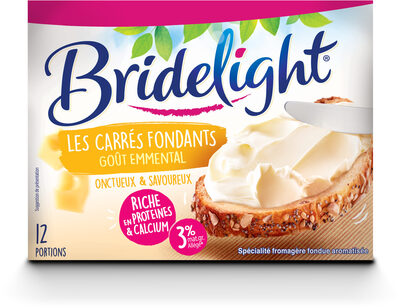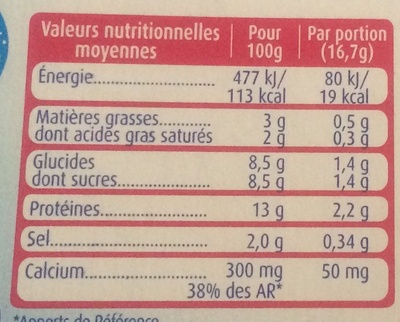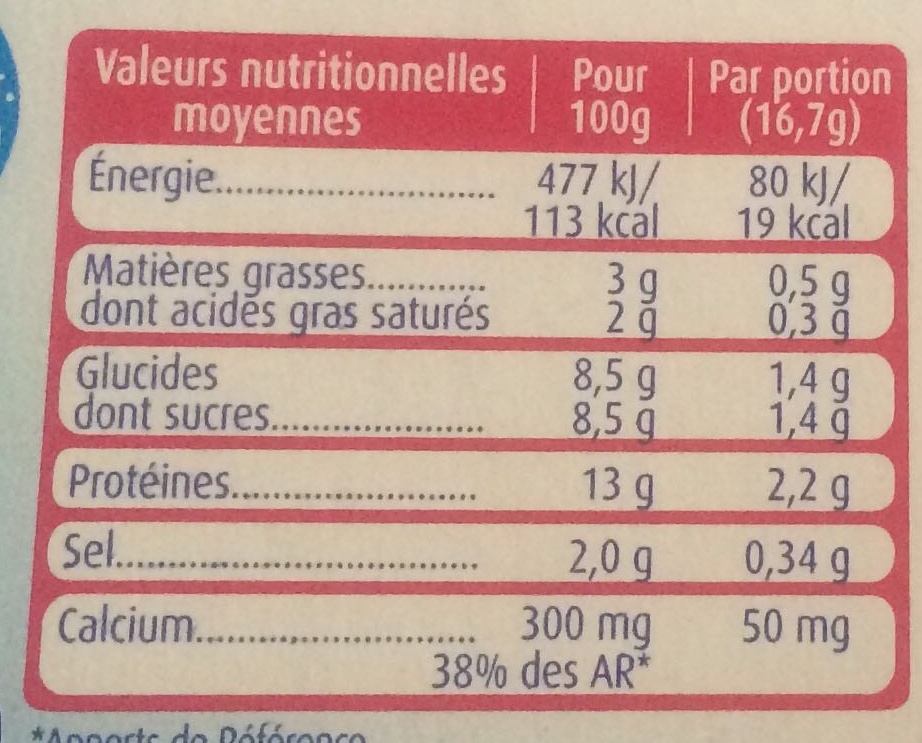Bridelight 12 portions gout emmental 3%mg 200g - 0.2 kg
This product page is not complete. You can help to complete it by editing it and adding more data from the photos we have, or by taking more photos using the app for Android or iPhone/iPad. Thank you!
×
Some of the data for this product has been provided directly by the manufacturer LACTALIS FROMAGES.
Barcode: 3228023020073 (EAN / EAN-13)
Common name: Spécialité fromagère fondue aromatisée.
Quantity: 0.2 kg
Packaging: Box, Cardboard, Fresh
Brands: Bridelight
Categories: Dairies, Fermented foods, Fermented milk products, Cheeses, Spreads, Salted spreads, Cow cheeses, Cheese spreads, Melted cheese
Labels, certifications, awards:
Low or no fat, Low fat, Reduced fat, Green Dot, Made in France
Manufacturing or processing places: France
Traceability code: FR 39.300.002 CE - Lons-le-Saunier (Jura, France)
Link to the product page on the official site of the producer: http://www.bridelight.fr/les-produits/fr...
Stores: carrefour.fr
Matching with your preferences
Environment
Carbon footprint
Packaging
Transportation
Other information
Preparation: Pour agrémenter vos plats chauds d'une touche fromagère, gourmande et légère : - Ajoutez une portion Bridelight en fin de cuisson et mélangez le tout 2 minutes, - ou passez une portion Bridelight 30 secondes au micro-ondes pour la ramollir puis mélangez dans votre plat.
Conservation conditions: A conserver entre +4°C et +12°C. Conserver au froid après achat
Customer service: BRIDELIGHT, - F 53089 LAVAL Cedex 9
Report a problem
Data sources
The manufacturer LACTALIS FROMAGES uses Agena3000 to automatically transmit data and photos for its products.
Product added on by openfoodfacts-contributors
Last edit of product page on by iliess.
Product page also edited by beniben, date-limite-app, desan, driveoff, julie-yuka, kiliweb, org-lactalis-fromages, packbot, quechoisir, tacite, yuka.UUtzcUZha0JoTjhieGZReThUNk00ZEI2K0thaldrMmxGZEF5SVE9PQ, yuka.Zm84aFNMOG5tZXN6aGZZWSt3dlU4ZjBrMkw3NGQxMjdNUEZPSUE9PQ, yuka.sY2b0xO6T85zoF3NwEKvlldMUcDOuCuYbi7tyFOE9v6WcL7JaNN27ofDGKs.










